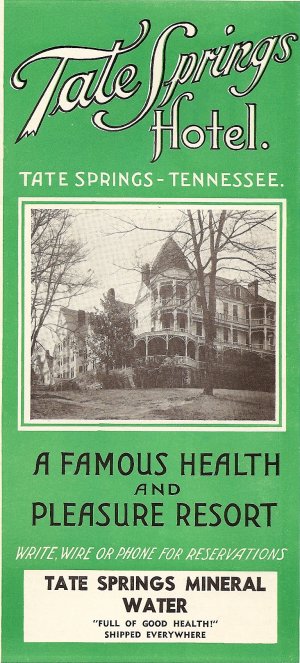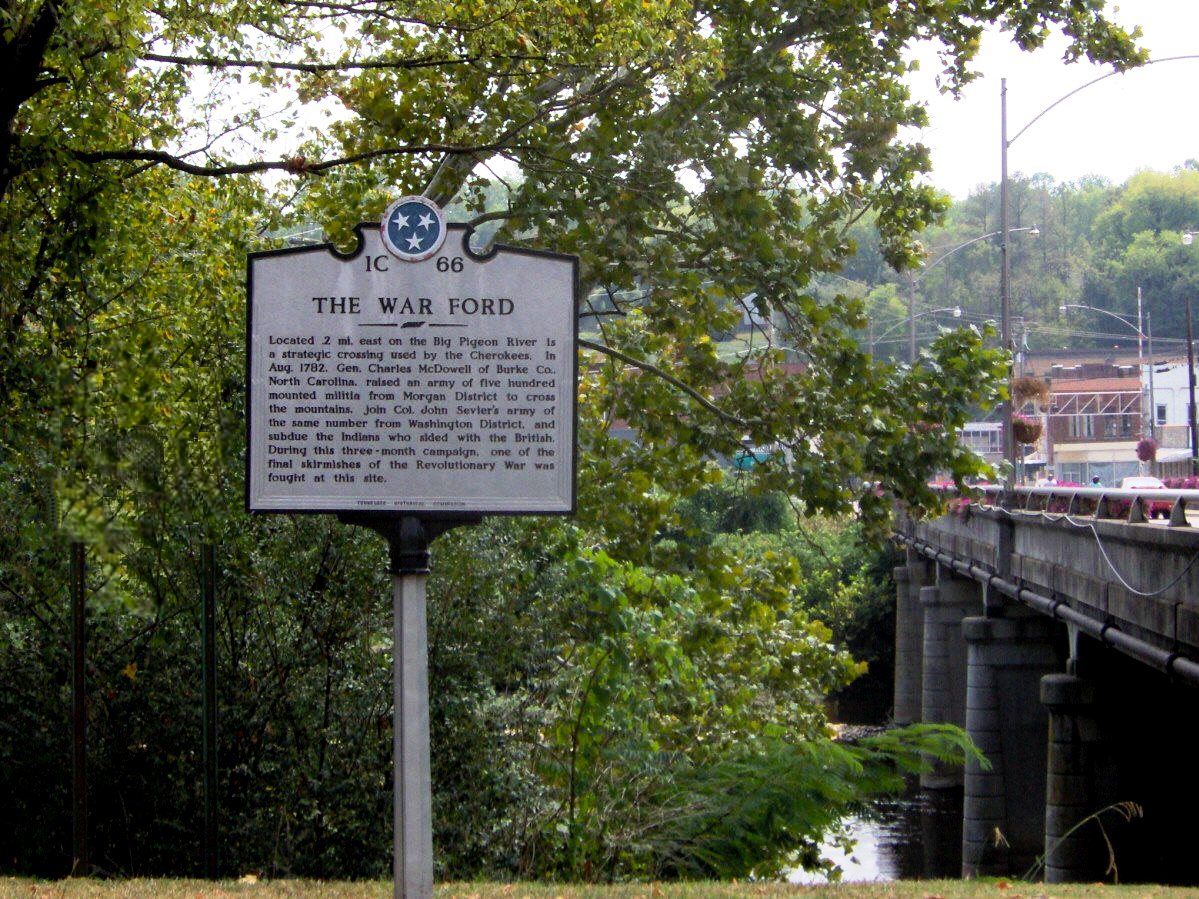|
Bean Station, Tennessee
Bean Station is a town in Grainger and Hawkins counties in the state of Tennessee, United States. As of the 2020 census, the population was 2,967. Established in 1776 as a frontier outpost by William Bean, it is considered one of the earliest permanently settled communities in Tennessee. It would grow throughout the rest of the 18th century and the 19th century as an important stopover for early pioneers and settlers in the Appalachia region due to its strategic location on the crossroads of Daniel Boone's Wilderness Road and the Great Indian Warpath. During the American Civil War, the town would be the site of the final battle of the Knoxville campaign, before Confederate forces surrendered to a Union blockade in nearby Blaine. In the early 20th century, Bean Station would experience renewed growth with the development of the Tate Springs mineral springs resort, investment from U.S. Senator John K. Shields, and the Peavine Railroad, which provided passenger rail service ... [...More Info...] [...Related Items...] OR: [Wikipedia] [Google] [Baidu] |
Town
A town is a human settlement. Towns are generally larger than villages and smaller than city, cities, though the criteria to distinguish between them vary considerably in different parts of the world. Origin and use The word "town" shares an origin with the German language, German word , the Dutch language, Dutch word , and the Old Norse . The original Proto-Germanic language, Proto-Germanic word, *''tūnan'', is thought to be an early borrowing from Proto-Celtic language, Proto-Celtic *''dūnom'' (cf. Old Irish , Welsh language, Welsh ). The original sense of the word in both Germanic and Celtic was that of a fortress or an enclosure. Cognates of ''town'' in many modern Germanic languages designate a fence or a hedge. In English and Dutch, the meaning of the word took on the sense of the space which these fences enclosed, and through which a track must run. In England, a town was a small community that could not afford or was not allowed to build walls or other larger fort ... [...More Info...] [...Related Items...] OR: [Wikipedia] [Google] [Baidu] |
Area Code 423
Area code 423 is a telephone area code in the North American Numbering Plan for the U.S. state of Tennessee. It comprises two disconnected areas of East Tennessee that are separated by area code 865. Principal cities in the northern part of the area code region are Morristown, Greeneville, Kingsport, Johnson City, and Bristol (more commonly known as the Tri-Cities region). The principal cities in the south are Chattanooga and Cleveland. History When the North American Numbering Plan was created in 1947, Tennessee was a single numbering plan area (NPA) with area code 901. In 1954, 901 was reduced to West Tennessee, while the eastern part of the state received area code 615. In 1995, the eastern portion of 615, including Knoxville, Chattanooga, and the Tri-Cities, was split off as area code 423. This was the first new area code in the state in 41 years. The boundary between 423 and 615 roughly followed the line between the Eastern and Central time zones; generally, Tennesse ... [...More Info...] [...Related Items...] OR: [Wikipedia] [Google] [Baidu] |
John K
*
{{hndis ...
John K may refer to: * John Kricfalusi, Canadian animator and voice actor * John K (musician), American singer See also * John Kay (other) *John Kaye (other) John Kaye or Jonathan Kaye may refer to: *John Kaye (screenwriter) (born 1941), American screenwriter and novelist *John Kaye (politician) (1955–2016), Australian politician *John Kaye (footballer) (born 1940), English former footballer and manag ... [...More Info...] [...Related Items...] OR: [Wikipedia] [Google] [Baidu] |
Tate Springs
Tate Springs was a historic world-class luxury resort complex located on U.S. Route 11W in Bean Station, Tennessee, United States. Known for its mineral spring water shipped internationally, it was considered to be one of the most popular resorts of its time in the Southern United States, and was visited by many wealthy and prominent families such as the Ford, Rockefeller, Firestone, Studebaker, and Mellon families. The hotel was destroyed by fire in 1963, and the only remnants of the complex are the cabins of the site, the pool bathhouse, and the springhouse, the last of which was listed on the National Register of Historic Places in 1973. Location The resort was located in eastern Grainger County, Tennessee, in the town of Bean Station. It was situated along a roadway that served as the Great Indian Warpath, and is now known as U.S. Route 11W. History The mineral spring used by the resort was believed to be discovered by members of the Cherokee tribe while planning ... [...More Info...] [...Related Items...] OR: [Wikipedia] [Google] [Baidu] |
Blaine, Tennessee
Blaine, formerly known as Blaine's Crossroads, is a city in Grainger County, Tennessee, United States, and a suburb of neighboring Knoxville. It is part of both the Knoxville Metropolitan Statistical Area and the Morristown Metropolitan Statistical Area. The population was 2,084 at the 2020 census, from 1,856 individuals since the 2010 census. History Blaine was originally known as Blaine's Crossroads (sometimes spelled "Blain"). During the early 19th century, it was located at the intersection of several important roads,David H. Burr,Map of Kentucky and Tennessee Exhibiting the Post Offices, Post Roads, Canals, Rail Roads, etc." ''The American Atlas'' (J. Arrowsmith: 1839). Accessed at the Library of Congress American Memory Collection, 2015. including the eastern terminus of the Emory Road (present day SR 61), which traversed northern Knox County, the northern terminus of Indian Ridge Road, and the Great Indian Warpath, present-day U.S. Route 11W. Shields' Station, a popular ... [...More Info...] [...Related Items...] OR: [Wikipedia] [Google] [Baidu] |
American Civil War
The American Civil War (April 12, 1861 – May 26, 1865; also known by other names) was a civil war in the United States. It was fought between the Union ("the North") and the Confederacy ("the South"), the latter formed by states that had seceded. The central cause of the war was the dispute over whether slavery would be permitted to expand into the western territories, leading to more slave states, or be prevented from doing so, which was widely believed would place slavery on a course of ultimate extinction. Decades of political controversy over slavery were brought to a head by the victory in the 1860 U.S. presidential election of Abraham Lincoln, who opposed slavery's expansion into the west. An initial seven southern slave states responded to Lincoln's victory by seceding from the United States and, in 1861, forming the Confederacy. The Confederacy seized U.S. forts and other federal assets within their borders. Led by Confederate President Jefferson ... [...More Info...] [...Related Items...] OR: [Wikipedia] [Google] [Baidu] |
Great Indian Warpath
The Great Indian Warpath (GIW)—also known as the Great Indian War and Trading Path, or the Seneca Trail—was that part of the network of trails in eastern North America developed and used by Native Americans which ran through the Great Appalachian Valley. The system of footpaths (the Warpath branched off in several places onto alternate routes and over time shifted westward in some regions) extended from what is now upper New York to deep within Alabama. Various Indians traded and made war along the trails, including the Catawba, numerous Algonquian tribes, the Cherokee, and the Iroquois Confederacy. The British traders' name for the route was derived from combining its name among the northeastern Algonquian tribes, ''Mishimayagat'' or "Great Trail", with that of the Shawnee and Delaware, ''Athawominee'' or "Path where they go armed". History The age of the Great Indian Warpath is unknown. Many of the trails were broken by animals traveling to the salt licks in the region, ... [...More Info...] [...Related Items...] OR: [Wikipedia] [Google] [Baidu] |
Wilderness Road
The Wilderness Road was one of two principal routes used by colonial and early national era settlers to reach Kentucky from the East. Although this road goes through the Cumberland Gap into southern Kentucky and northern Tennessee, the other (more northern route) is sometimes called the "Cumberland Road" because it started in Fort Cumberland in Maryland. Despite Kentucky Senator Henry Clay's advocacy of this route, early in the 19th century, the northern route was selected for the National Road, connecting near Washington, Pennsylvania into the Ohio Valley of northern Kentucky and Ohio. In 1775, Daniel Boone blazed a trail for the Transylvania Company from Fort Chiswell in Virginia through the Cumberland Gap. It was later lengthened, following Indian trails, to reach the Falls of the Ohio at Louisville. The Wilderness Road was steep, rough and narrow, and could be traversed only on foot or horseback. By contrast, wagons could travel along the National Road route (originally t ... [...More Info...] [...Related Items...] OR: [Wikipedia] [Google] [Baidu] |
Daniel Boone
Daniel Boone (September 26, 1820) was an American pioneer and frontiersman whose exploits made him one of the first folk heroes of the United States. He became famous for his exploration and settlement of Kentucky, which was then beyond the western borders of the Thirteen Colonies. In 1775, Boone blazed the Wilderness Road through the Cumberland Gap and into Kentucky, in the face of resistance from American Indians, for whom Kentucky was a traditional hunting ground. He founded Boonesborough, one of the first English-speaking settlements west of the Appalachian Mountains. By the end of the 18th century, more than 200,000 people had entered Kentucky by following the route marked by Boone. Boone served as a militia officer during the Revolutionary War (1775–1783), which was fought in Kentucky primarily between American settlers and British-allied Indians. Boone was taken in by Shawnees in 1778 and adopted into the tribe, but he resigned and continued to help protect the ... [...More Info...] [...Related Items...] OR: [Wikipedia] [Google] [Baidu] |
Appalachia
Appalachia () is a cultural region in the Eastern United States that stretches from the Southern Tier of New York State to northern Alabama and Georgia. While the Appalachian Mountains stretch from Belle Isle in Newfoundland and Labrador, Canada, to Cheaha Mountain in Alabama, ''Appalachia'' typically refers only to the cultural region of the central and southern portions of the range, from the Catskill Mountains of New York southwest to the Blue Ridge Mountains which run southwest from southern Pennsylvania to northern Georgia, and the Great Smoky Mountains of Tennessee and North Carolina. In 2020, the region was home to an estimated 26.1 million people, of which roughly 80% are white. Since its recognition as a distinctive region in the late 19th century, Appalachia has been a source of enduring myths and distortions regarding the isolation, temperament, and behavior of its inhabitants. Early 20th century writers often engaged in yellow journalism focused on sensat ... [...More Info...] [...Related Items...] OR: [Wikipedia] [Google] [Baidu] |
2020 United States Census
The United States census of 2020 was the twenty-fourth decennial United States census. Census Day, the reference day used for the census, was April 1, 2020. Other than a pilot study during the 2000 census, this was the first U.S. census to offer options to respond online or by phone, in addition to the paper response form used for previous censuses. The census was taken during the COVID-19 pandemic, which affected its administration. The census recorded a resident population of 331,449,281 in the fifty states and the District of Columbia, an increase of 7.4 percent, or 22,703,743, over the preceding decade. The growth rate was the second-lowest ever recorded, and the net increase was the sixth highest in history. This was the first census where the ten most populous states each surpassed 10 million residents as well as the first census where the ten most populous cities each surpassed 1 million residents. Background As required by the United States Constitution, the U.S. census ... [...More Info...] [...Related Items...] OR: [Wikipedia] [Google] [Baidu] |
.jpg)
.jpg)






